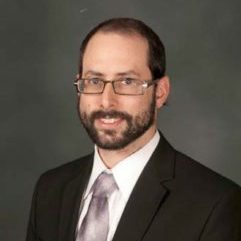As a teacher, I am sometimes faced with a student who uses an inappropriate word or tells an inappropriate story. Rather than berate the child or send him out of the room, I like to look the student straight in the eye. “I am offended”, I tell them, “that you would say that word in front of me”.
I have found that this method works best, because it communicates a deep truth. I really am offended.
As human beings and as Jews, we need to work to create a persona that discourages vulgarity, violence, and meaningless hatred. We are taught that by perfecting ourselves we can affect even our involuntary actions, making them holy as well.
The Torah in Parshas Masei describes the apportioning of land to the various tribes. The tribe of Levi will not receive land among their brethren. Instead, they were given forty-two random cities sprinkled throughout Israel.
These forty-cities cities have additional significance as well. When a person kills unintentionally the courts do not sentence him or her to death but the relatives of the deceased can avenge his blood by killing the murderer. The murderer protects himself run to a designated Ir Miklat – a city of refuge. In addition to the six designated cities of refuge, there were also forty-two other safe cities for these quasi murderers – the cities of the Levites. This is starnge. Not only did the Leviim have to be guests in the land of their brothers, we also send them our murderers as neighbors. What is going on?
I believe that we can find the answer by examining the root of accidental murders. The Gemara tells us that the first Bais Hamikdosh was destroyed because of Idol worship, illicit relationships and intentional murder. It remained destroyed for seventy years. The second Bais Hamikdosh was destroyed two thousand years ago because of hatred – Sinas Chinam – and it remains destroyed to this very day. The Vilna Gaon explains that while the sins of the first temple seem worse, they were only outward sins. Deep inside there was a spark of mutual respect and unity. On the other hand, the hatred that existed at the time of the second Bais Hamikdosh was a problem whose source lies deep within our souls.
When someone kills accidentally and runs to an Ir Miklat, he or she is not being punished for any conscious action. They are being punished for the fact that a terrible tragedy happened through them.
For example, The Chofetz Chayim says that if someone is careful never to listen to Lashon Hora (slander), Hashem will make sure that they never hear Lashon Hora – even involuntarily. This works on two levels: One (accurate) understanding of this is that Hashem will miraculously protect us from Lashon Hora. Another understanding is based on a practical reality: If people know that I am not the type of person who likes Lashon Hora they will not be able to bring themselves to tell it to me. They will bring it elsewhere.
While we can never quite understand how and why things happen, the Torah is very clear on the issue of murder – “Megalgelim Zechus al Yedei Zakai v’chov al yedei chayav” – Hashem doesn’t cause bad things to come from a good person. If someone causes a death, even accidentally, some fault lies with the killer: On an esoteric level Hashem caused this tragedy to happen through him because he does not have enough respect for the life of a fellow human being. Practically, perhaps it was a lack of respect for the lives of others that caused him to be careless in the first place. He is not a murderer but he must stop everything and examine himself deeply. Outwardly he may come across as the most refined and perfected human being, but somewhere deep inside there is something within him that does not value human life.
We send the accidental murderer to the Ir Miklat for a prolonged vacation with ideal role models. The Leviim of the Ir Miklat represented the highest levels of human life. They were the Jewish people’s role models and they devoted their entire lives to the Bais Hamikdosh and to studying and teaching the Torah. As role models they could not let a day go by without examining themselves deeply and making a Cheshbon Hanefesh. The “murderer” went there to learn what it means to be a perfected human being. Among the Leviim, he could learn to examine himself deeply and remove the lack of respect for life that exists somewhere within him.
As Tisha B’av approaches, we can all do some deep cleansing. We can awaken a deep respect for other people within our souls. We can become the type of people that never hear Lashon Hora – because everyone knows that we aren’t interested. We just love people too much. We can replace senseless hatred with a deep sense of respect and celebrate Tisha B’av in Yerushayim with the coming of Moshiach.
On Parshas Matos: https://yaacovhaber.com/rsh/the-land-of-love/

“Megalgelim Zechus al Yedei Zakai v’chov al yedei chayav”
This is the first I recall hearing this expression. Is it a gemora? Is it mentioned more than once? How does the Eigle coming via Aharon haCohen fit into this?
Thanks for reading. The idea is mentioned in Makos 10b. The exact quote is from Shabbos 32a.